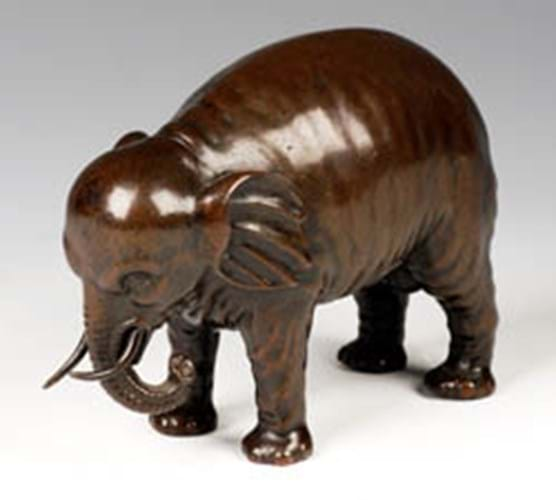
Their reappearance in the royal menageries of the 16th century, the gifts of Asian potentates, caused a sensation.
As the subject of a celebrated memorial fresco by Raphael, Hanno, an albino elephant sent in 1515 by the Sultan of Gujarat as a gift to Manuel I of Portugal, is perhaps the most famous, but an equal inspiration to all who saw him was Suleiman the Magnificent.
This young elephant bull, born in captivity in the royal stables of the king of Kotte (Sri Lanka), arrived in Lisbon in 1542 with the entourage of the first Asian embassy ever to come to Europe. Given as a diplomatic gift for the Portuguese monarch John III, he was, with no lack of irony, given the name of the Ottoman sultan who had been the scourge of Christian armies before his conquests were checked at the Siege of Vienna in 1529.
John III had intended Suleiman for his grandson Don Carlos (the eldest son of Philip II of Spain), but, following a journey to the Spanish capital Valladolid in 1549, he was adopted by the Holy Roman Emperor Maximillian II, who arranged his transportation to Italy.
Arriving in Genoa on November 12, 1551, Suleiman then began an overland and river crossing to Austria via Milan, Cremona, Mantua and Trent - reaching the latter on December 13, just as the Council of Trent had finished its famous meeting. The procession entered Vienna on March 6, 1552, where he was installed in the menagerie at Schloss Kaiserebersdorf. Accounts of the celebratory reception the elephant received on these journeys have survived - as has his likeness.
Measuring only 4½in (11cm) high, a Renaissance period bronze thought to depict the imperial elephant sold for £50,000 at Duke's of Dorset on September 29.
It was spotted in a display cabinet alongside many modern collectables by Duke's valuer Matthew Denney whilst carrying out a routine valuation at an unassuming bungalow in North Dorset. He was able to make a direct comparison between this model and another included in Tomasso Brothers Fine Art's Scultura exhibition in New York, 2008.
There were slight differences in the casts, but it was quite probably made around the time the beast made his momentous journey. A German or Austrian rather than an Italian origin was suggested.
Contested well beyond its £2000-4000 estimate by three phone bidders, the successful bidder was from Hong Kong.
And what happened to Suleiman? Following his epic journey he died only 18 months after his arrival in Vienna - a sad moment marked by a medal commissioned by Maximillian from the sculptor Michael Fuchs. Presented to the mayor of the city, Suleiman's bones were fashioned into a chair that still resides at the Kremsmünster Abbey, while his skin was stuffed and survived for centuries in the Wittlesbach royal collections.
Transferred to the Bavarian National Museum where it was photographed in 1928, it survived the bombing raids on Munich in 1943, only to be sold after the War for shoe leather.
By Roland Arkell




